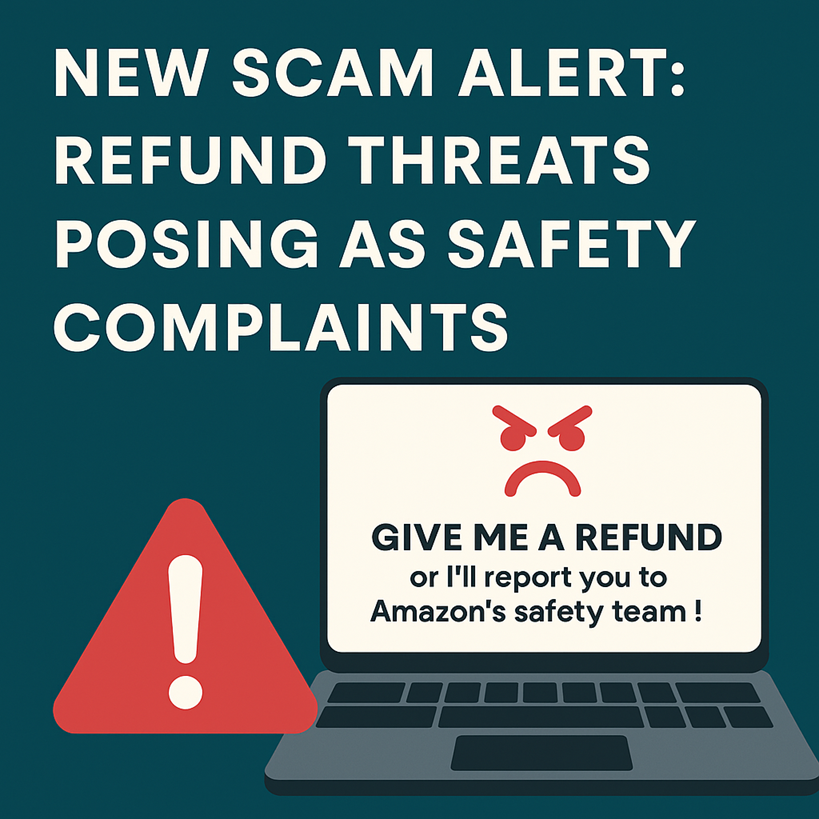Unauthorized Sellers on Amazon: What You Can (and Can't) Do to Stop Them
Unauthorized Sellers on Amazon: What You Can (and Can't) Do to Stop Them
Someone’s selling your product on Amazon, and you never gave them permission.
You don’t recognize the seller. You never signed an Amazon reseller agreement with them. You might even have a contract saying they’re not allowed to list on marketplaces. And yet, there they are.
Your price? Undercut. Your listing? Hijacked. Your distribution strategy? Blown wide open. Your team’s asking what to do, and you’re left thinking: How is this even allowed?
The natural question is: Can we get Amazon to take them down?
Let’s walk through the real answer – without myths, or legal confusion.
Amazon’s Default Stance: The First Sale Doctrine
The first thing you need to know is this:
Amazon follows U.S. First Sale Doctrine.
That means once someone legally buys your product – even from your own distributor, retail store, or a liquidator – they are allowed to resell it. Including on Amazon.
It doesn’t matter if they’re not an authorized reseller. It doesn’t matter if you told them not to sell on marketplaces. In Amazon’s view, as long as:
-
The product is authentic
-
It’s in new condition
-
It matches the listing
…that seller has the right to sell it.
If that sounds insane from a brand control perspective, you’re not alone. But Amazon didn’t invent this policy. It’s backed by U.S. law, and Amazon strictly adheres to it.
Why Reporting Unauthorized Sellers Rarely Works
Let’s say you file a complaint against the seller. Maybe you report them for selling inauthentic or even counterfeit goods.
Here’s what really happens:
Amazon immediately asks the seller to provide proof of sourcing.
And if the seller submits an invoice from one of your distributors, or even a retail receipt, Amazon will side with them. The listing stays up. And if Amazon sees a pattern of what they view as unjustified reports, they can restrict your brand from filing future complaints.
We’ve seen it happen.
Reporting a valid reseller as “inauthentic” when the product is real can backfire. It’s not only ineffective – it can damage your brand’s credibility with Amazon.
"But We Have a Contract!" - Why Amazon Doesn't Enforce It
We hear this a lot:
“We have signed agreements that clearly say ‘no selling on Amazon.’ Doesn’t that protect us?”
Yes – but only in a court of law.
Amazon doesn’t enforce private agreements. If a seller breaks your contract and lists on Amazon, Amazon won’t remove them just because you say so. Even if you attach the signed agreement to a support ticket, they’ll reply:
“This is a civil matter. Please resolve it through legal channels.”
In other words: get a court order.
What Can You Actually Do?
If reporting doesn’t work, and contracts don’t carry weight on Amazon, what are your real options?
1. Enforce Your Contracts Outside of Amazon
If you have a strong suspicion about who the seller is – say, one of your wholesale accounts – you can take action directly.
Start with a formal cease-and-desist. If that fails, your legal team can escalate. And if you eventually get a court judgment, Amazon will comply with the removal request.
We’ve seen that route work. But it’s time-consuming and best used when the damage is significant.
2. Join Amazon’s Transparency Program
This is Amazon’s only built-in brand protection tool that can actually prevent unauthorized listings.
Here’s how it works:
-
Every unit you sell carries a unique serialized code
-
Only sellers authorized and enrolled in Transparency can list those products
-
Amazon scans each item at fulfillment to verify the code
If someone tries to list your product without a valid code, Amazon blocks it.
It does require setup and operational coordination. But it’s the only structural solution Amazon offers today to actually lock your catalog.
Bonus: How to Identify the Seller
Sometimes the biggest problem is: you don’t even know who’s listing it.
Here are a few methods that have worked:
-
Order the product yourself and check the return address or packing slip
-
Look for PO numbers or identifiers that trace back to your supply chain
-
Use marketplace monitoring tools to analyze seller behavior, shipping regions, or catalog overlap
We’ve helped clients track down rogue sellers with just a few of these tactics.
When to Act (and When Not To)
Before jumping into legal action or enrolling in Transparency, take a breath and ask:
-
Is this seller damaging our brand or customer experience?
-
Are they undercutting MAP or hurting retail relationships?
-
Are they selling expired, damaged, or repackaged goods?
If the answer is yes – you should act.
If they’re just selling clean product they bought through legitimate channels, it might not be worth the energy.
Pick your battles. Focus on control, not chasing ghosts.
Bottom Line: Control Is Earned, Not Assumed
Amazon isn’t built to protect your B2B contracts. It’s built to protect the customer. And unless a seller poses a risk to that customer, Amazon stays neutral.
That doesn’t mean you’re stuck.
It just means you need a smarter enforcement strategy.
At ASA Compliance Group, we’ve helped hundreds of brands navigate this exact situation – from tracing unauthorized sellers to locking catalogs through Amazon programs.
If you’re facing unauthorized resellers and want to regain control of your brand on Amazon, let’s talk.
We’ll show you what works, what doesn’t, and how to move forward.
Need help taking control of your brand on Amazon?
ASA Compliance Group has helped thousands of sellers and brands protect their presence, defend their catalog, and build compliant long-term Amazon strategies.


